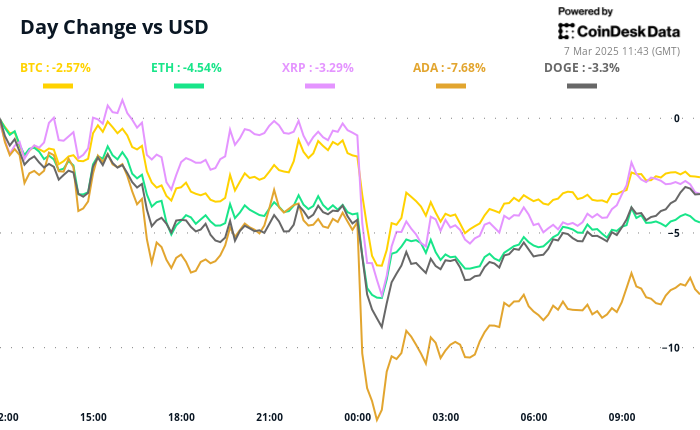Trump’s Executive Order: A Strategic Stockpile without Market Impact
On Thursday, U.S. President Donald Trump signed an executive order aimed at creating a digital asset reserve, which will include Bitcoin (BTC) and various altcoins seized during enforcement actions. However, the order does not authorize any new purchases of digital assets, meaning this reserve will function purely as a stockpile without contributing to market buying pressure. This development has left traders feeling disheartened, prompting them to pursue short-dated put options in Bitcoin, Ether (ETH), and Solana (SOL), according to data from Deribit tracked by Block Scholes. In contrast, XRP continues to exhibit a strong sentiment among traders.
Understanding Put Options and Market Sentiment
A put option grants the buyer the right to sell an underlying asset at a predetermined price before a specified expiration date. Essentially, this serves as a safety net, protecting investors from potential declines in asset prices.
Current market skews—indicators measuring the difference in implied volatility between lower strike puts and higher strike calls—show that short-dated put options for BTC, ETH, and SOL are trading at a premium compared to calls. This indicates a growing concern about potential downside risks.
Andrew Melville, a research analyst at Block Scholes, noted, “Short-tenor skews for BTC, ETH, and SOL options are signaling a clear demand for puts. Notably, April expirations and beyond still reflect a bullish tilt for BTC and ETH, while XRP options maintain a positive skew across all tenors longer than one week.” He emphasized that derivatives are largely reflecting the market’s disappointment in response to Trump’s much-anticipated Strategic Reserve executive order.
Melville also remarked on the term structures for BTC and ETH, stating that they are flattening from the highly inverted levels observed throughout March. Furthermore, at-the-money volatility levels have dropped significantly by over 10 points, as the market adjusts to the upcoming economic events, including Friday’s non-farm payroll report and Crypto Summit.
Anticipating Market Influences: Crypto Summit and Payroll Data
Traders are eagerly awaiting the outcomes of Friday’s White House crypto summit, which is expected to provide insights that could positively impact the market.
Ryan Lee, chief analyst at Bitget Research, indicated that “the results could significantly shape the regulatory landscape and institutional sentiment toward digital assets, particularly in defining token classifications, tax incentives, and reducing enforcement actions. This could potentially eliminate barriers for banks and funds.” He added that key market signals to monitor include solid guidelines on securities laws, the reserve’s structure, regulatory leniency from figures such as SEC’s Mark Uyeda, and any hints of legislative support, all of which could either trigger a bullish surge or cause volatility if the information remains ambiguous.
Additionally, the U.S. non-farm payrolls report for February, scheduled for release at 13:30 UTC, is under scrutiny. Analysts expect job creation to improve to 160,000 from January’s 143,000, with the unemployment rate remaining steady at 4%. Average hourly earnings are projected to increase by 0.3% month-on-month, a decrease from January’s 0.5% growth, according to estimates from Reuters tracked by FXStreet.
Should the payroll data come in weaker than anticipated, it could reignite hopes for at least three Federal Reserve rate cuts this year, providing potential support for risk assets, including Bitcoin. However, the durability of any gains remains uncertain due to the inflationary effects of Trump’s tariffs.
Market Outlook: Fed’s Stance and Potential Volatility
Markus Thielen, founder of 10x Research, noted that the interest rate market has adjusted its expectations, now forecasting three rate cuts this year instead of just one. However, he cautioned that this outlook may be overly optimistic, as the Federal Reserve is likely to focus on monitoring the inflationary effects stemming from Trump’s policies, a process that could take months or even quarters to fully evaluate. Consequently, the Fed may adopt a neutral stance for the time being.
Furthermore, Thielen pointed out that the “Fed put,” which refers to the level at which the Federal Reserve would intervene to support markets, might be set lower under Trump’s administration compared to what it would be under potential leaders like Kamala Harris or Joe Biden. This implies that policymakers may tolerate greater market volatility before deciding to intervene.



